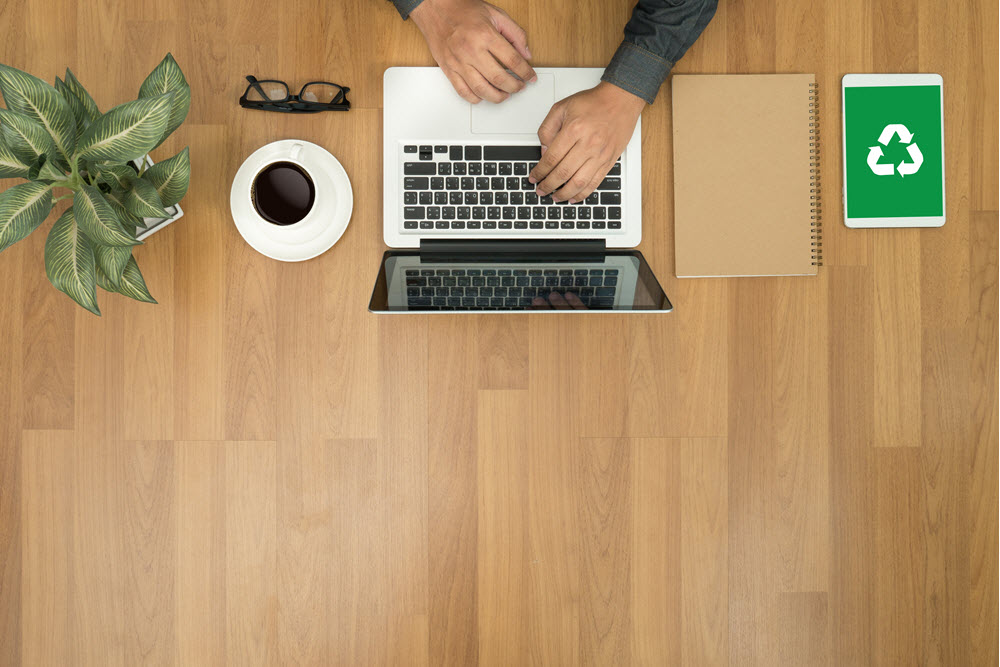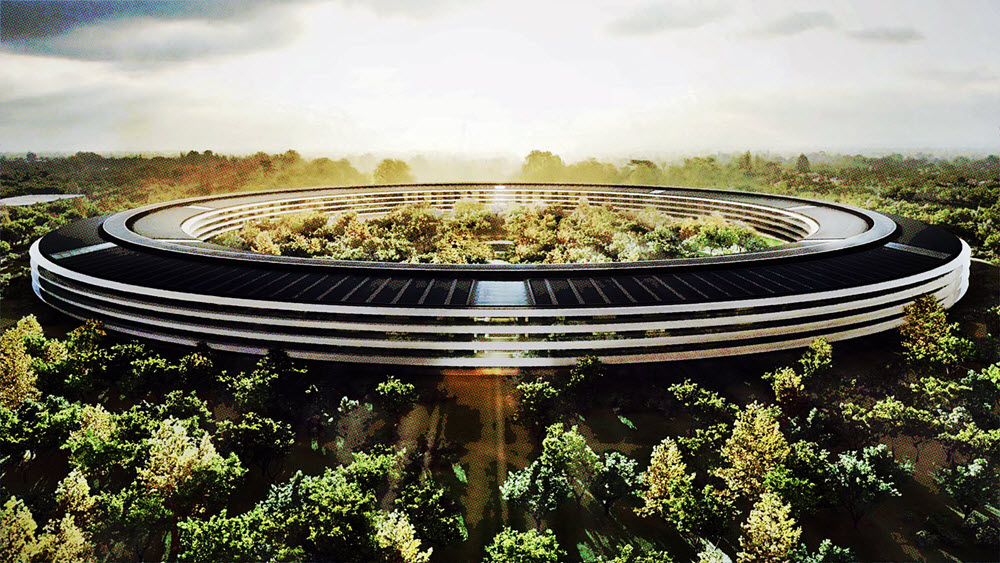With all the rapid changes in renewable energy systems, building automation technology, and earth-friendly interior designs, it’s hard to keep up with the latest developments that are transforming today’s office environments. Here’s a quick guide to help you keep up-to-date with the latest eco-friendly tips that will make your office a more pleasant and green-friendly place to work.
Trend 1: Energy Independence is increasingly seen as an achievable design goal for office buildings
It’s time to think of the original LEED certification standards as the warm up act. The newest office designs are striving for energy independence like never before:
Net Zero building designs (which require near to zero energy to heat and cool) are becoming more mainstream thanks to clever energy conservation schemes, ranging from super-insulated building technologies to integrated “smart” building HVAC systems that optimize heating and cooling throughout the day by automating tasks, such as opening and closing windows, positioning sun shades and adjusting thermostats*.
(*Formaspace uses NEST smart thermostats in our facility to control heating and cooling.)
Newer Energy Net Positive buildings (which can supply surplus energy to the traditional utility grid) extend the techniques pioneered in Net Zero construction by adding sophisticated renewable energy systems, such as large capacity solar or wind-powered battery storage systems that conserve excess power in large-scale battery storage systems. One of the most prominent new office designs, the iconic new Apple headquarters, is scheduled to open in a few short months; this building is purported to be powered entirely by solar array panels on the roof. According to the many rumors swirling around the project, Apple’s new headquarters will qualify as an energy net positive building as well.
As the cost of solar systems continues to drop, they are becoming a more viable option for retrofitting existing smaller office buildings (or even residential homes). There has also been a shift in thinking for these smaller scale installations — the newest approach deemphasizes selling excess generated energy back to utilities or storing energy in relatively expensive batteries in favor of using solar power to run energy-hungry appliances (such as air conditioners) directly. This approach makes sense because when the sun is brightest, the cooling needs will be at their highest. Sensing a trend, heating and cooling supplier, Lennox, has introduced a line of small-scale air-conditioners and heat pumps do just that — the equipment can run on a combined mix of both solar power and electricity from the grid. The built-in control will draw in as much “free” power as it can before using paid power from the utility.
Green rooftop gardens that keep office interiors cool, while controlling water runoff and reducing the unwanted urban “heat island” effects, are now a well-proven technology. GAP Inc. (owners of GAP, Banana Republic, and Old Navy stores) built a massive office complex south of San Francisco way back in 1997 that features a rooftop covered with a 6-inch deep layer of engineered soil planted with native California grasses. Not only does it reduce heat reflected back into the atmosphere, but the roof also helps keep the building quiet inside.
2016 marked an important turning point in energy usage. Renewable energy’s contribution to the overall US energy generation mix is up significantly — rising from 8% to 15% during 2016. According to recently released data from the International Energy Agency (IEA), US emissions dropped 3.1% in 2016 compared to the previous year — down to a level not seen since 1992 — despite the fact our economy is now 80% bigger.
Advanced, energy saving office design is not limited to Silicon Valley or even western countries like Germany which is quickly moving toward a renewable energy grid. Under the leadership of Chinese engineer Huang Ming, known as China’s King of Solar, the town of Dezhou has rebranded itself as “Solar Valley” thanks to its forward-thinking investment in “Solar Architecture.”
Trend 2: To be green, look at the total life-cycle cost of your investments in interior furnishings and other equipment
Over the past 24 years since the U.S. Green Building Council introduced the LEED (Leadership in Energy and Environmental Design) standards, it’s become part of mainstream thinking to consider the impact that different choices will have on environmental and energy conservation.
We here at Formaspace have done the same. For example, we have developed our own extensive internal recycling program (nearly all our raw materials, even scrap pieces, are used in the production process) as well as comprehensive energy saving programs (ranging from installing natural skylights in our factory to eliminating energy inefficient compressed air tools from our production lines).
When it comes to choosing interior office furnishings, many customers seeking LEED certification credits turn to Formaspace.
We are known for our modular design furniture systems, which unlike our traditional casework offerings, can be disassembled and reassembled as often as needed — with zero landfill waste — which can help secure important LEED credits when remodeling facilities.
It’s also important to know that many Formaspace products are either constructed from a supply of rapidly renewable materials or built using high levels of post-consumer or post-industrial recycled material. A good example is our Eco-Gray powder coating material used to protect steel surfaces — it not only looks great and costs less, it’s made from materials recovered during the manufacturing process. We can also accommodate your needs by making custom furniture solutions that incorporate upcycled / recycled materials, such as recycled wood or other materials.
Finally, all our furniture is made locally in our Austin, Texas factory using American made materials, which means the energy impact of shipping is lower than products made overseas. This can also help your project qualify for LEED credits.
Trend 3: Being green is not just saving dollars and cents, it’s making healthier choices for the people who work in your office
People are your most important asset.
Take care of the health of your employees by choosing green solutions in the office.
For example, we all want to encourage employees to live a healthier, more active lifestyle that leads to greater productivity while cutting down on rising health care costs. Many companies, such as Microsoft, encourage employees to ride their bicycles to work with incentives such as employee showers and changing lockers, secure bicycle storage, and subsidized bicycle tune-ups. Other employers also encourage healthy bicycle commuting by providing bicycle share programs as well as offers to provide employees quick transportation home when there is an unexpected emergency.
Reducing indoor air pollution is another important “green” consideration. As buildings become more energy efficient thanks to upgraded insulation, the number of air changes per hour can go down. This makes it more important than ever to reduce or eliminate sources of indoor air pollution. For example, Formaspace furniture uses finishes that reduce or eliminate volute organic compounds (VOCs). You should check other interior furnishings before purchasing to make sure they are not off-gassing compounds like formaldehyde or other dangerous chemicals (which often be found in imported flat pack furniture products).
As concrete floors become more popular, it’s important to pay particular attention to the products used to colorize, seal, and protect concrete floors. Make sure to choose products that are not releasing large amounts of volatile organic compounds. The same advice goes for choosing wall coverings, paint, and carpet systems.
Good lighting is another consideration for employee health and well-being. While natural light is by far the best, high efficiency LED lighting systems are increasingly specified to replace both incandescent lighting as well as compact fluorescent (CFL) bulbs. Be sure to dispose of CFL bulbs properly — the trace amounts of mercury contained in each bulb can be an environmental hazard to our food chain.
Take the time to investigate environmentally-friendly cleaning materials. Many commercial products contain complex chemicals compounds that can linger in the air or stay on the surfaces we touch. Often the simplest solutions are the best, such as a vinegar solution diluted with water. We recently wrote a guide for cleaning and maintaining desk and work surface counter tops that highlights some of the natural products (such as vinegar and citrus oils) that can keep your office clean and hygienic without being overly reliant on complex chemical compounds.
Encourage employees to recycle and save energy to make your green office campaign a success
While you need to look out for ways to keep the office greener for your employees, the personnel working in the office have a great influence on the overall success of the program. Encourage your workers to make smarter choices throughout the day, such as:
- turning off computers and monitors and other electrical equipment when not in use
- using recycling bins in the office and in the kitchen mess
- washing dishes and silverware rather than throwing away disposable plastic items
- relying more on electronic documents when possible to reduce unnecessary paper and ink usage.
Partner with Formaspace to Make Your Office a Greener Place to Work
Does your company offer an environmentally-friendly product or service? If so, we’d like to hear from you, as we are always looking for ways to improve our internal manufacturing processes as well as provide a wider range of green product solutions for our customers.
Contact a Formaspace Design Consultant today to learn more.
Just fill out the form below, and we’ll give you a call right away.












